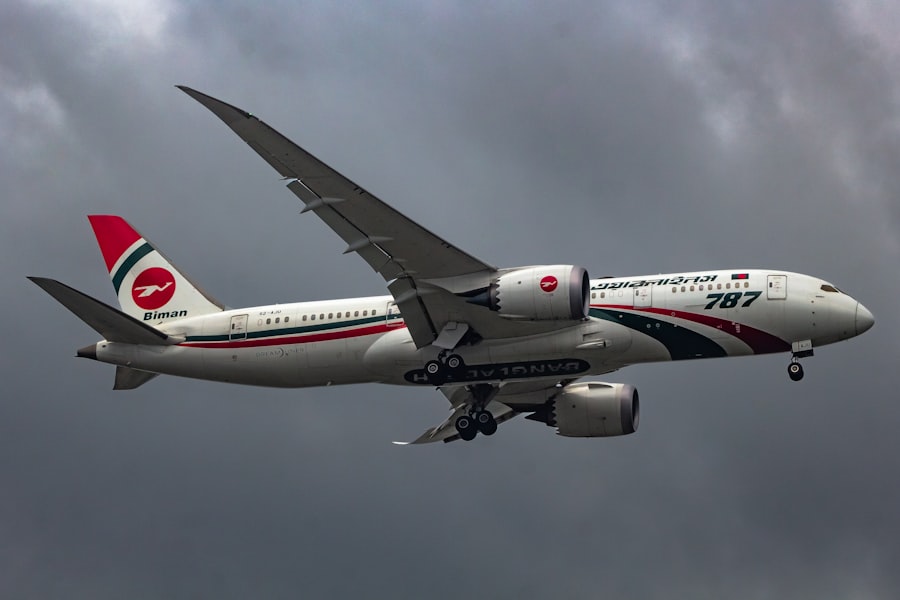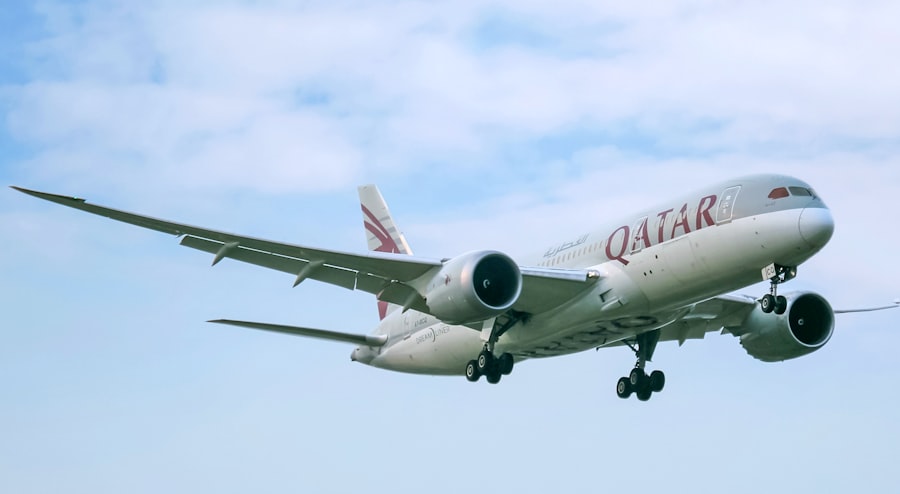The Boeing 787-8, often referred to simply as the Dreamliner, represents a significant leap forward in commercial aviation technology. Launched in the early 2000s, this aircraft was designed to meet the evolving demands of airlines and passengers alike, combining advanced aerodynamics with cutting-edge materials and systems. The 787-8 is the first variant of the 787 family, which also includes the larger 787-9 and 787-10 models.
Its introduction marked a new era in long-haul travel, characterized by enhanced efficiency, improved passenger comfort, and a reduced environmental footprint. Boeing’s vision for the 787-8 was to create an aircraft that could operate on long-haul routes while being economically viable for airlines. The development process was extensive, involving collaboration with numerous suppliers and stakeholders across the globe.
The first flight took place in December 2009, and the aircraft entered service in October 2011 with All Nippon Airways (ANA). Since then, the 787-8 has become a popular choice among airlines worldwide, with its innovative design and operational capabilities making it a cornerstone of many fleets.
Key Takeaways
- The Boeing 787-8 is a revolutionary aircraft known for its advanced technology and fuel efficiency.
- Key features and innovations of the Boeing 787-8 include its use of composite materials, advanced aerodynamics, and fuel-efficient engines.
- The Boeing 787-8 is designed to have a lower environmental impact and higher fuel efficiency compared to other aircraft in its class.
- Passenger comfort and experience are prioritized in the Boeing 787-8, with features such as larger windows, improved air quality, and quieter cabins.
- The Boeing 787-8 has an impressive flight range and versatility, allowing airlines to operate long-haul routes and open new markets.
- The Boeing 787-8 has had a significant impact on the aviation industry, influencing the design of future aircraft and changing the way airlines operate.
- Challenges and controversies surrounding the Boeing 787-8 include production delays, battery issues, and labor disputes.
- The future of the Boeing 787-8 looks promising, with continued advancements in technology and potential for further improvements in fuel efficiency and environmental impact.
Key Features and Innovations of the Boeing 787-8
One of the most notable features of the Boeing 787-8 is its use of composite materials, which constitute approximately 50% of the aircraft’s primary structure, including the wings and fuselage. This extensive use of carbon-fiber-reinforced polymer not only reduces the overall weight of the aircraft but also enhances its resistance to corrosion compared to traditional aluminum structures. The lighter weight contributes to improved fuel efficiency, allowing airlines to operate more economically on long-haul routes.
In addition to its composite construction, the 787-8 incorporates advanced aerodynamics that optimize performance. The wing design features raked wingtips that reduce drag and improve lift, contributing to better fuel efficiency and overall flight performance. The aircraft is also equipped with state-of-the-art engines, specifically the Rolls-Royce Trent 1000 or General Electric GEnx engines, which are designed to be quieter and more fuel-efficient than their predecessors.
These innovations collectively enable the 787-8 to achieve a range of approximately 7,530 nautical miles, making it capable of connecting distant city pairs without the need for refueling.
Environmental Impact and Fuel Efficiency

The environmental impact of aviation has become an increasingly pressing concern in recent years, and the Boeing 787-8 addresses this issue head-on. With its advanced technology and design features, the aircraft boasts a remarkable fuel efficiency improvement of approximately 20% compared to similarly sized aircraft. This reduction in fuel consumption translates directly into lower carbon emissions, making the 787-8 a more environmentally friendly option for airlines looking to minimize their ecological footprint.
Moreover, the Dreamliner’s engines are designed to meet stringent noise regulations, resulting in quieter operations both during takeoff and landing. This is particularly beneficial for communities located near airports, as it helps mitigate noise pollution associated with air travel. The combination of reduced fuel burn and lower emissions positions the Boeing 787-8 as a leader in sustainable aviation practices, appealing to environmentally conscious airlines and passengers alike.
Passenger Comfort and Experience
| Category | Metric | Value |
|---|---|---|
| Seating | Seat Pitch | 32 inches |
| Entertainment | Number of Movies | 100+ |
| Food and Beverage | Meal Options | Vegetarian, Non-vegetarian |
| Comfort | Blanket and Pillow | Available |
The Boeing 787-8 is not only a marvel of engineering but also a pioneer in enhancing passenger comfort during long-haul flights. One of its standout features is the cabin altitude system, which maintains a lower cabin altitude of 6,500 feet compared to the typical 8,000 feet found in most commercial aircraft. This innovation significantly reduces passenger fatigue and discomfort during long flights, allowing travelers to arrive at their destinations feeling more refreshed.
Additionally, the cabin design incorporates larger windows that can be electronically dimmed, providing passengers with an unobstructed view of the sky while also allowing them to control the amount of natural light entering the cabin. The windows are approximately 65% larger than those found on similar aircraft, contributing to an overall sense of spaciousness within the cabin. Furthermore, the advanced air filtration system enhances air quality by removing contaminants and providing a more comfortable environment for passengers throughout their journey.
Flight Range and Versatility
The operational versatility of the Boeing 787-8 is one of its key selling points for airlines around the world. With a maximum range of about 7,530 nautical miles, it can efficiently serve both long-haul international routes and medium-haul domestic flights. This flexibility allows airlines to optimize their route networks based on demand while minimizing operational costs associated with fuel consumption.
The ability to operate on longer routes without requiring refueling stops opens up new possibilities for airlines to connect cities that were previously underserved or not connected at all. For instance, airlines can now offer non-stop flights between cities like Los Angeles and Sydney or New York and Dubai, significantly reducing travel time for passengers. This capability not only enhances convenience for travelers but also allows airlines to tap into new markets and expand their global reach.
Impact on the Aviation Industry

The introduction of the Boeing 787-8 has had a profound impact on the aviation industry as a whole. Its innovative design and focus on efficiency have set new standards for what modern commercial aircraft can achieve. Airlines that have adopted the Dreamliner have reported significant operational cost savings due to its fuel efficiency and lower maintenance requirements compared to older aircraft models.
Moreover, the success of the 787-8 has prompted other manufacturers to invest in similar technologies and designs. Competitors have been compelled to innovate in order to keep pace with Boeing’s advancements in aerodynamics, materials science, and engine technology. This competitive pressure has led to a broader trend within the industry toward more sustainable practices and greater emphasis on passenger comfort.
Challenges and Controversies
Despite its many successes, the Boeing 787-8 has not been without its challenges and controversies. The aircraft’s development was marred by delays and cost overruns that raised concerns among stakeholders about Boeing’s management practices and supply chain logistics. Initial production issues led to significant delays in deliveries, frustrating airlines that had eagerly anticipated adding the Dreamliner to their fleets.
Additionally, there have been safety concerns related to battery systems used in some early models of the 787-8. In early 2013, incidents involving overheating lithium-ion batteries led to temporary groundings of the entire fleet while investigations were conducted. Although these issues were eventually resolved through design modifications and improved safety protocols, they highlighted potential vulnerabilities in new technologies that can arise during the introduction of groundbreaking aircraft.
Future of the Boeing 787-8 and Beyond
Looking ahead, the future of the Boeing 787-8 appears promising despite its earlier challenges. As airlines continue to prioritize fuel efficiency and passenger comfort in their fleet decisions, demand for this aircraft remains strong. The ongoing evolution of air travel dynamics—such as increased demand for non-stop international routes—positions the Dreamliner as a key player in shaping future aviation trends.
Furthermore, Boeing is actively working on enhancements for its existing fleet through software updates and retrofitting options that improve performance and efficiency even further. As environmental regulations become more stringent globally, innovations aimed at reducing emissions will likely keep the Boeing 787-8 relevant in an increasingly competitive market. In conclusion, while challenges have accompanied its journey thus far, the Boeing 787-8 stands as a testament to innovation in aviation technology.
Its blend of efficiency, passenger comfort, and operational versatility ensures that it will continue to play a vital role in shaping air travel for years to come.


